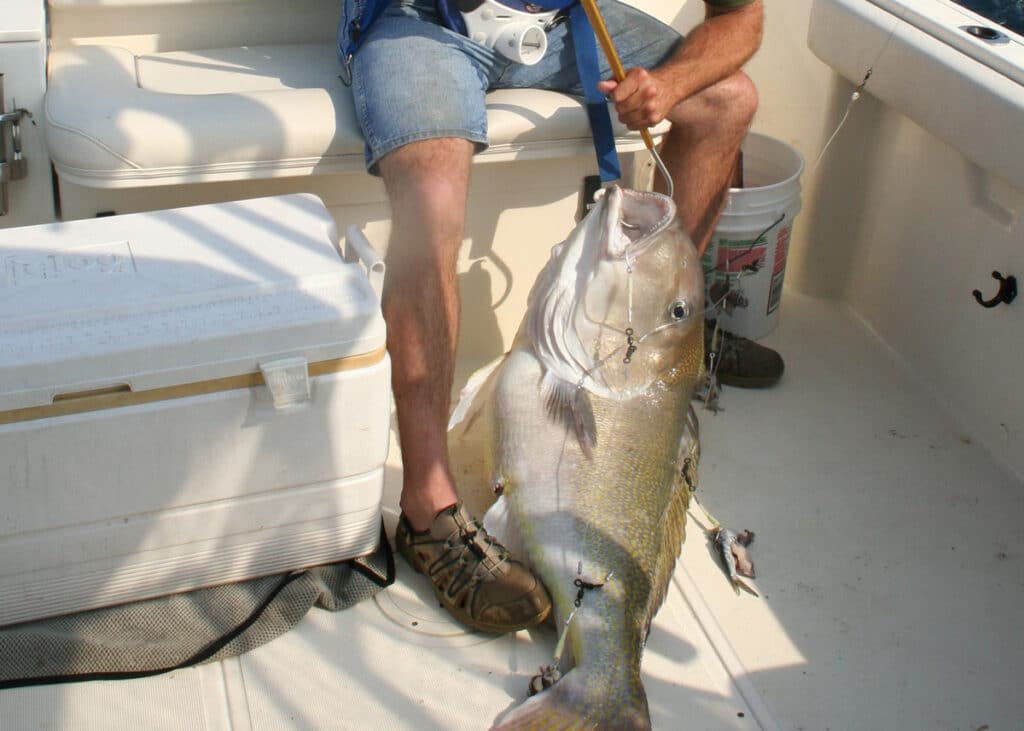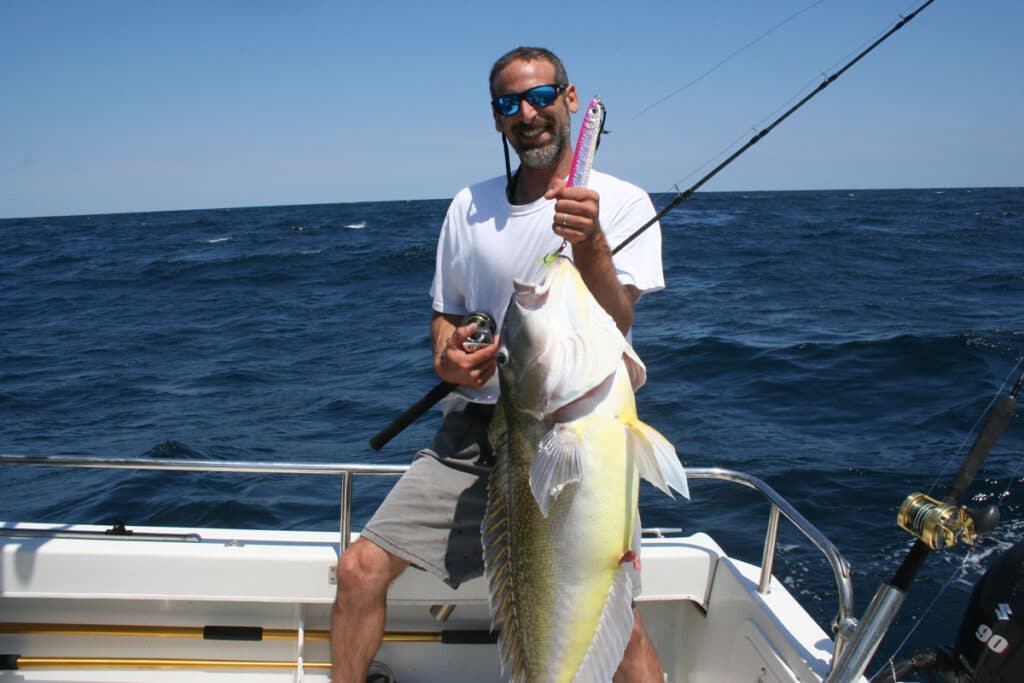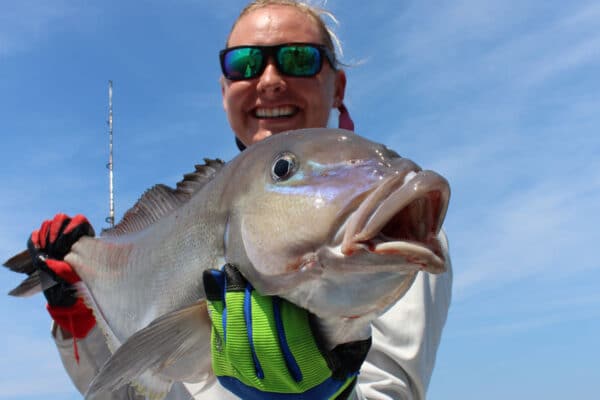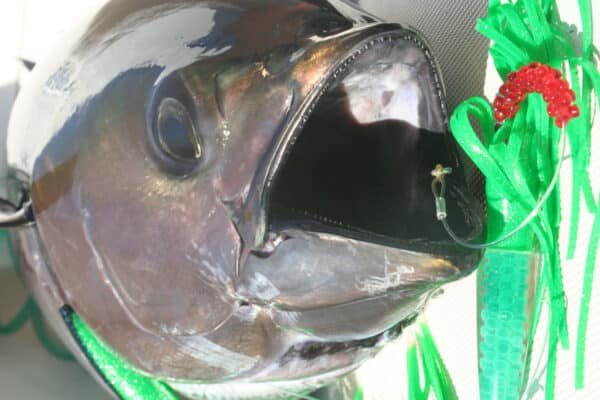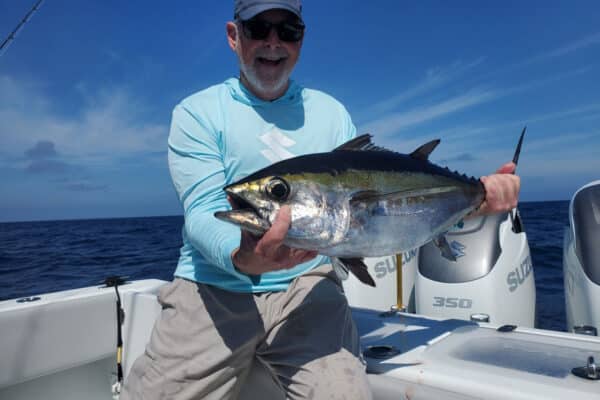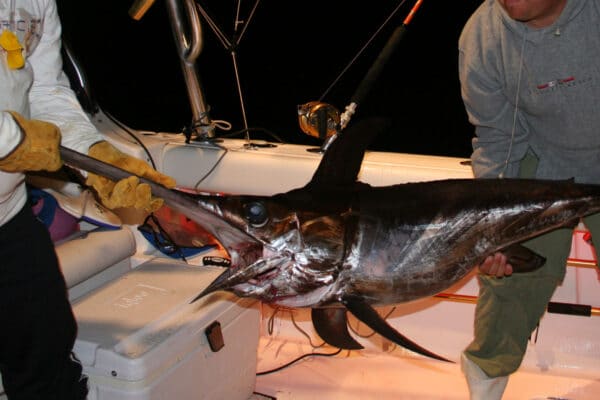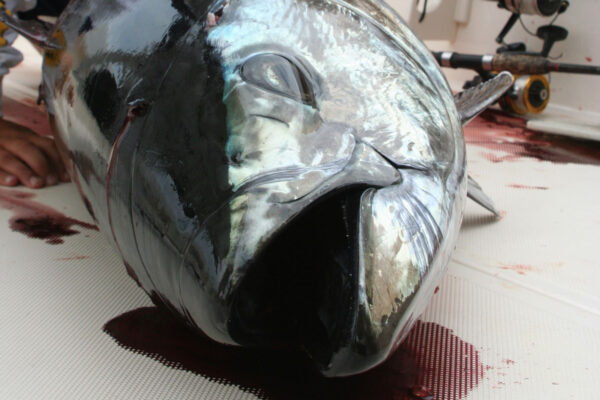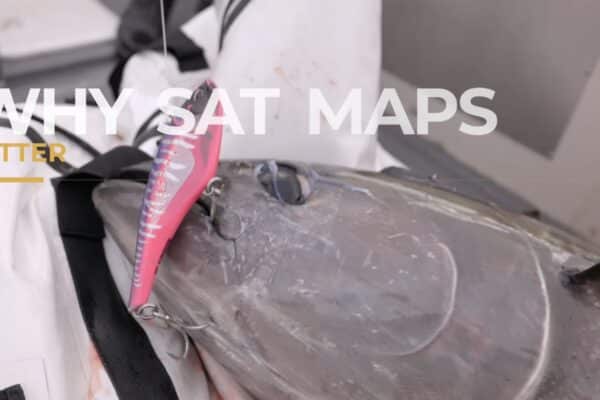
Golden tilefish are big, tasty, and tough to catch—but they’re even tougher to find.
You know the golden tilefish are out there, but you don’t know exactly where? The ocean is a vast desert and the oasis that hold golden tiles compromises a relatively tiny swath of oceanic area, so the very best way to find these fish is with your electronics and a set of proven numbers. Of course, that’s easier said than done. Golden numbers are hard to come by and anglers will guard them with their lives. Plus, if you fish a single set of number too hard in a season or two you can fish it out, so finding new numbers is a never-ending quest. You’ll need to do some serious prospecting if you want to find these fish and catch ‘em over the long haul. And that doesn’t mean drifting around aimlessly with baits on bottom; try that and you’ll almost certainly be going home empty-handed. Instead, you need to perform a targeted search.
Depth Matters
The depths you choose to search aren’t merely important, they’re hyper-critical. You’ll encounter goldens once in a while in 500’ of water and you’ll find them in 1,000’ as well. But the vast majority of the golden tilefish you catch will be in 650’ to 850’ of water. Focus your search there.
Most anglers know that golden tiles live on the edge of the Continental Shelf, and this is the area where you’ll find this same depth range. But don’t just go to the edge and start looking. Goldens live in colonies that are often tightly packed on small plateaus along the shelf. An area that drops sharply from 650’ to 750’, then plateaus and barely drops off another 10’ for a quarter mile, then starts plummeting again, is prime.
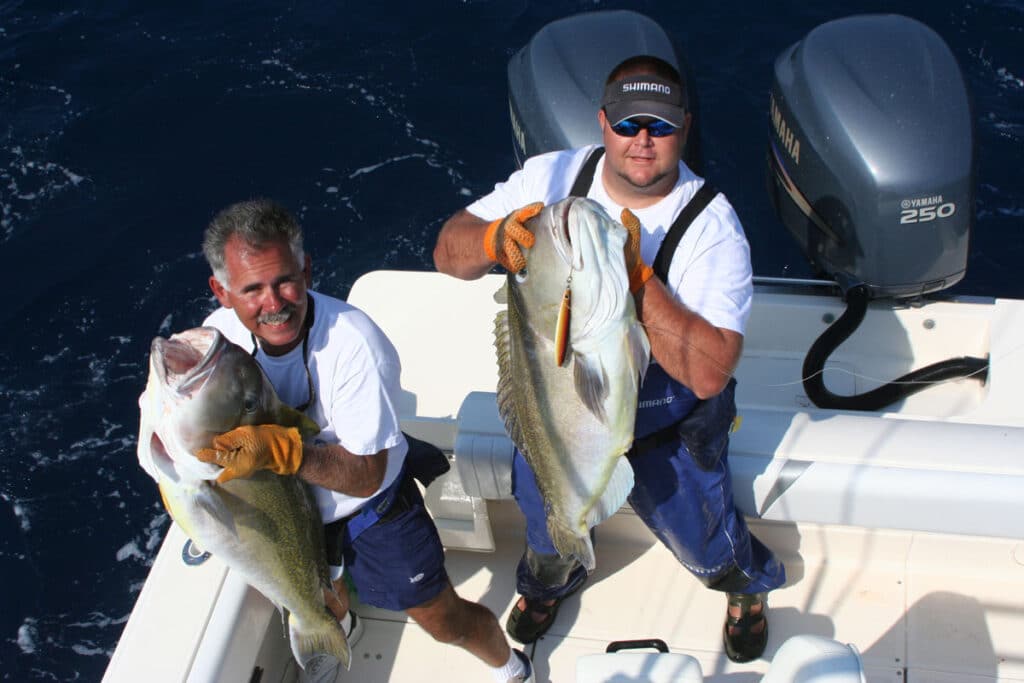
Do some prep work prior to prospecting to locate some plateaus like this. If you have a set of seriously good digital charts you can spot the zones where the contour lines spread out and indicate a gentler slope. If you’re a Satfish subscriber you can do the same, looking for areas where the contour lines indicate drop-offs that are less dramatic where the shelf levels out. You’ll still need to look for the specific areas with the least depth change on-site, but studying the contours prior to leaving the dock at least gives you a few starting points.
Mud on Your Face
Golden tilefish are partial to green mud bottom, which is why they tend to gather in the areas with less of a drop; these aren’t as scoured by the currents, and the bottom is usually muddy rather than rocky or sandy. On some chartography bottom composition is identified, but it’s not unusual for it to be a bit off. A better way to judge is to simply grab a chunk of that bottom for yourself.
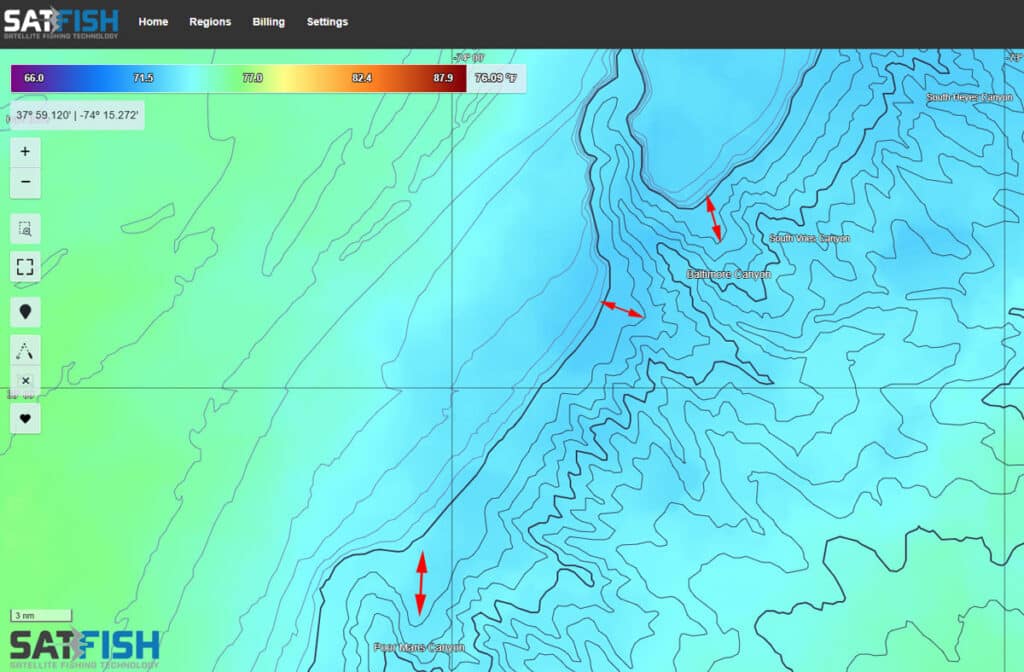
To take a bottom sample you’ll need to rig a line with a few inches of copper or lead pipe, capped at one end and drilled for your line at the other end. Weight it down with four or five pounds of lead, attach it to your line, and drag it along for a while. In 650’ and more obviously this takes a good bit of time and effort, so it doesn’t make sense to locate a spot then just drag it to find out what the bottom’s like—instead, get your lines ready and drop ‘em down, too.
Meat-Curtains Vs. Jigs
There are two basic tactic used for getting goldens on the line: drifting meat-curtain rigs with five or six baited 12/0 to 14/0 hooks, or dropping 800-plus gram jigs. The vast majority of the anglers out there go with the meat rig, but savvy anglers will hunt down some monster jigs and try them, as well. There are times when one or the other works far better due to the inexplicable decision-making processes of a fish lying on the bottom an eighth of a mile below your boat. Bottom line, when you’re prospecting you really need to try both. Get out a meat curtain or two with a mix of squid chunks and cut fish, and let it drag. Then drop down a jig or two (with a single hook swinging up top and a treble on the bottom) tipped with the same baits, and hover it a few feet off bottom. Drop until it hits every so minute or two to make sure you’re in the right zone.
At the same time you can drop down the pipe and take a sample. If you pull up sand and don’t get any bites after half an hour, scratch that spot off your list. If you get one bite and pull up black mud or silt, rank it a C-. If you get one bite and pull up green mud give it a C+ and plan on stopping by again in the future, because maybe the fish were just off their feed at that moment. And if you pull up three fish and find green mud in the pipe you know you’ve found a winner.
As you prospect, remember that it’s critical to make a mark on the chartplotter every time you have a solid hook-up. Not after the fish is boated, because it takes so long to crank up a golden tilefish that you’ll be out of position by the time that happens. Do two or three drifts in the same area and catch four or five fish, and you’ll soon notice that the marks will be in a tight cluster.
Congrats, you’ve just discovered a colony of golden tilefish. Now whatever you do, guard those numbers with your life.

